
On the night of Jul 24/25, 2014, I observed the cataclysmic variable star ASAS-SN14cv. It faded slightly to V=15.7 during tonight's run. You can read more about ASAS-SN14cv, which was discovered only recently, at
The main setup was:
Notes from the night
Below is a graph showing the sky brightness as a function of time during the observing run. The haze got much worse as the run continued.

Below is a graph showing the FWHM as a function of time during the observing run.

Here's a chart of the field of ASAS-SN14cv, which is at
RA = 17:43:48.58 Dec = +52:03:46.8 (J2000)
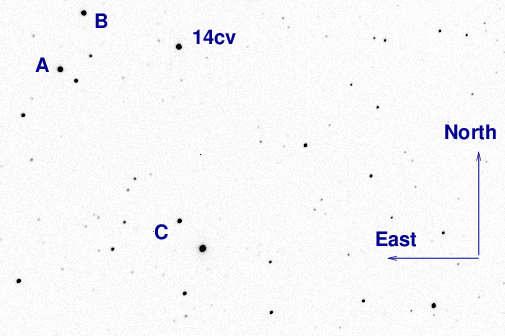
Some of the reference stars marked above have magnitudes in the UCAC4. Specifically, star "A" above is
The television camera on the finder scope shows the following when we're pointed at ASAS-14cv. North up, East left, field about 1 degree on a side.
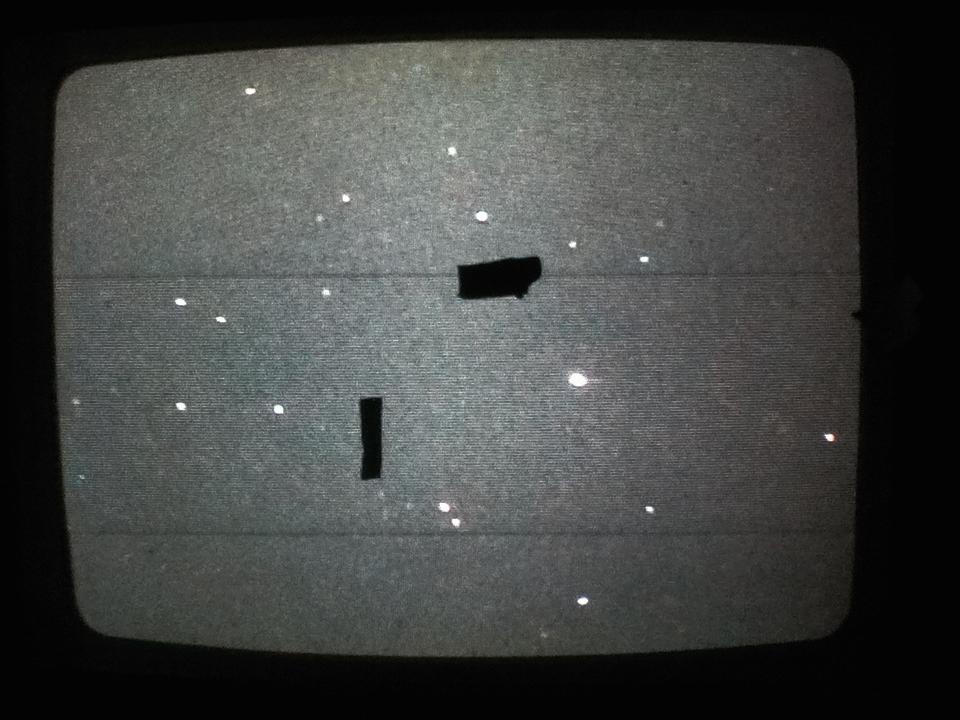
The image adjustment factor graph shows a steady rise, in part due to the increasing airmass, but mostly due to haze.
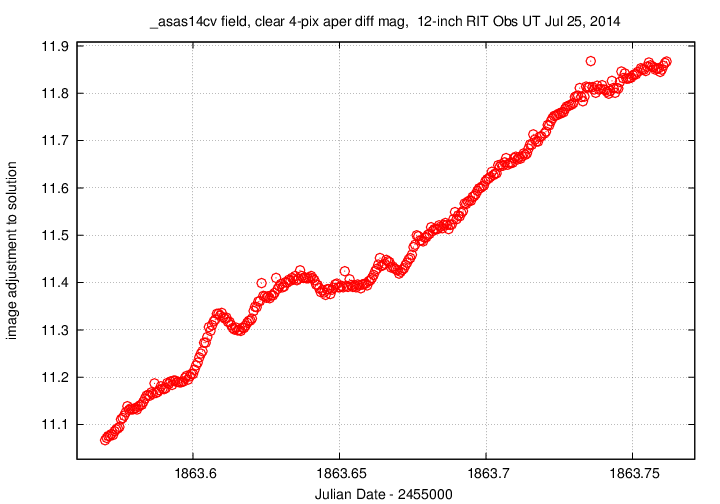
Using aperture photometry with a radius of 4 pixels (radius of 7.4 arcsec), I measured the instrumental magnitudes of a number of reference stars and the target. Following the procedures outlined by Kent Honeycutt's article on inhomogeneous ensemble photometry, I used all stars available in each image to define a reference frame, and measured each star against this frame. I used the UCAC4 V-band magnitude of star "A" to convert the ensemble instrumental magnitudes to a reported "V"-band magnitude (but remember, it's a clear filter).
Sigma-vs-mag plot: The two brightest stars were both saturated, and so I gave them zero weight in the ensemble calculations. The outlier at instrumental mag = 5.9 mag is ASAS-14cv.
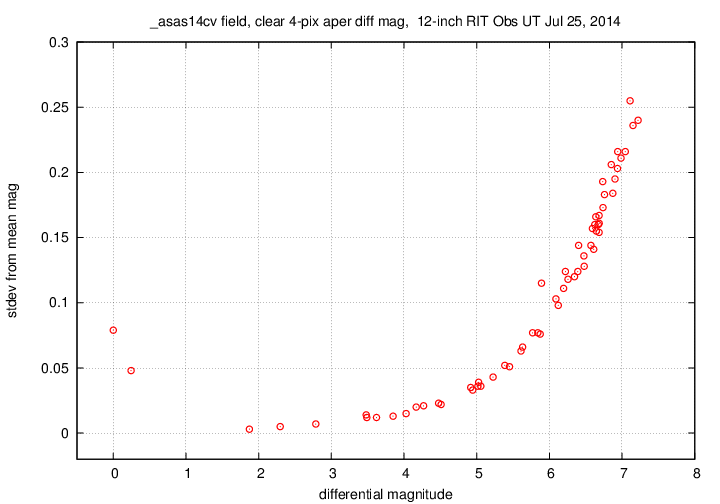
The target, shown in green, decreases slightly over the the roughly 4.5 hours of observation. The scatter increases near the end due to bad conditions.
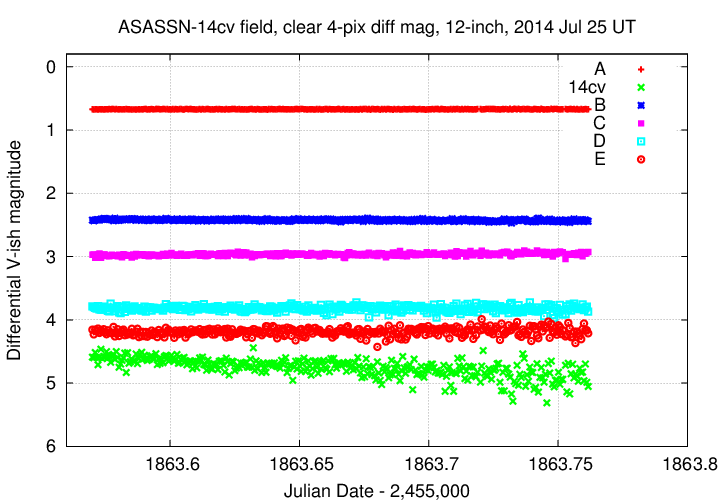
You can see my measurements of the star in the ASCII text file below. The first few lines are shown here:
Replaced incorrect values UT July 25 23:15
# Measurements of ASAS_SN14cv made at RIT Obs, Jul 25, 2014 UT, # in mediocre conditions. # by Michael Richmond, using 12-inch Meade and SBIG ST-8E CCD. # Exposures 30 seconds long, no filter. # Tabulated times are midexposure (FITS header time - half exposure length) # and accurate only to +/- 1 second (??). # 'mag' is a differential magnitude based on ensemble photometry # using a circular aperture of radius 7.4 arcseconds. # which has been shifted so UCAC4 711-058151 has mag=11.518 # which is its V-band mag according to UCAC4. # # UT_day JD HJD mag uncert Jul25.06998 2456863.56998 2456863.57108 15.434 0.078 Jul25.07052 2456863.57052 2456863.57162 15.446 0.079 Jul25.07106 2456863.57106 2456863.57216 15.362 0.075
Last modified 7/25/2014 by MWR.